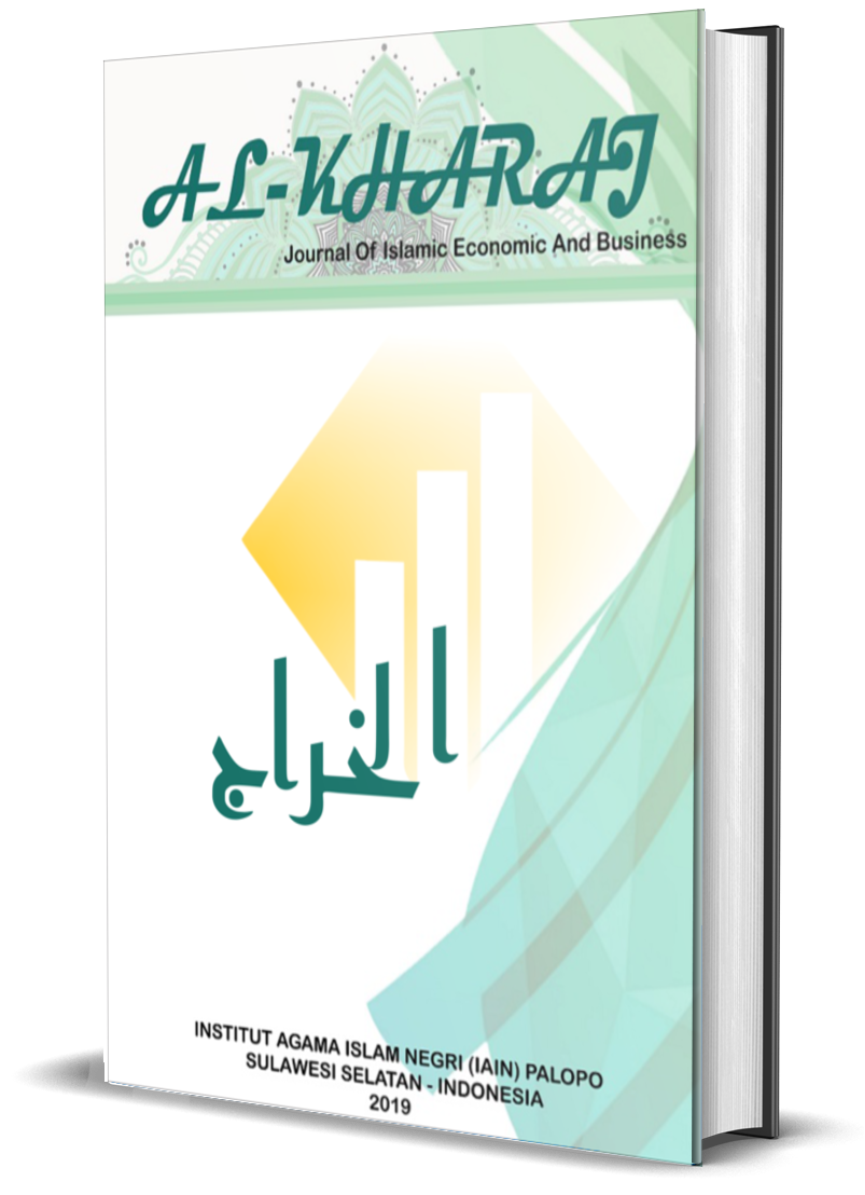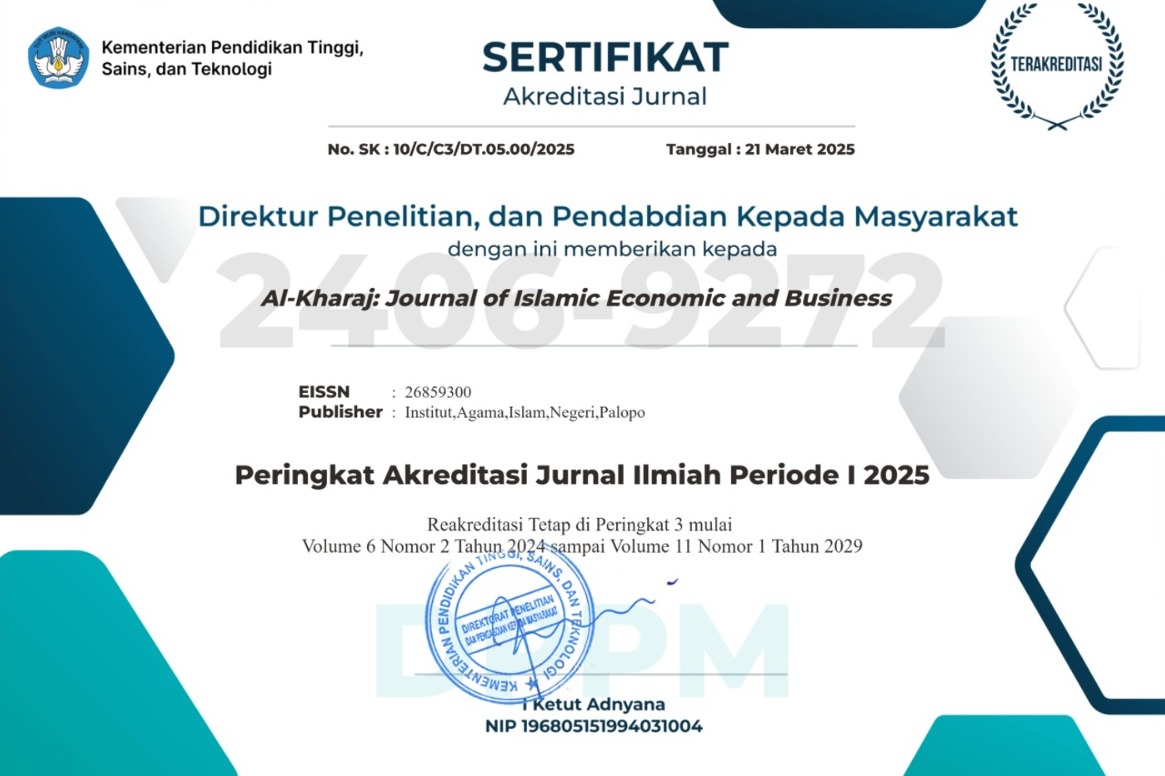The Effect of Marketing Mix on Sales Volume at UD. Design Kencono
DOI:
https://doi.org/10.24256/kharaj.v7i4.7984Keywords:
product, price, location, promotion, sales volumeAbstract
Indonesia's economic growth is significantly influenced by small and medium industries (SMEs). In addition to creating jobs, SMEs encourage economic expansion in various regions, including rural areas. The purpose of this study was to analyze the influence of the marketing mix consisting of products, prices, locations, and promotions on sales volume in UD. Design Kencono Ponorogo. A type of associative research using a quantitative approach was used in this study. The population and sample are UD employees. Plan a Kencono of 50 people. The saturated sampling technique was used in this study because the population was less than 100. The type of data used is primary data, using data collection techniques through the distribution of questionnaires to UD employees. Design Kencono Ponorogo. Using multiple linear analysis techniques through SPSS version 26, to determine the influence of Marketing Mix indicators (Products, Prices, Locations, Promotions) on Sales Volume in UD. Design Kencono. The results of the F test study show that, where the Marketing Mix indicators in the form of Products (X1), Price (X2), Location (X3), and Promotion (X4) together have a significant effect on Sales Volume (Y). The results of the study in the T test, only Products (X1) and Price (X2) had a partial significant effect on Sales Volume (Y), while for Location (X3) and Promotion (X4) there was no partial significant effect on Sales Volume (Y). The results of the determination test showed that the Product, Price, Location, and Promotion variables had the ability of 50.9% to explain the Sales Volume variable, while other variables that were not included in this study accounted for the remaining 49.1%.
References
Adoe, V. S. (2024). SALES MANAGEMENT & ENTREPRENEURSHIP BOOK. Title: CV. Science Techno Direct.
Christianti, C. C., Suswatiningsih, T. E., & Trimerani, R. (2022). ANALYSIS OF THE INFLUENCE OF MARKETING MIX ON THE SALES VOLUME OF LAMPUNG MILK BANANA CHIPS. Journal of Integrated Agribusiness, 16(2), 1-16.
Handayani, P. A., & Musa, M. I. (2023). THE EFFECT OF MARKETING MIX ON SALES VOLUME OF SUZUKI ERTIGA CARS AT PT. MEGAHPUTRA SEJAHTERA PETTARANI MAKASSAR BRANCH. Economic and Business Journal, 1(2), 113-124.
Hendrayani, E. S. (2021). MARKETING MANAGEMENT (Basics & Concepts). Bandung: CV. INDONESIAN SCIENCE MEDIA.
Malihah, L. (2023). ANALYSIS OF THE MARKETING MIX IN THE WADAI KELEMBEN INDUSTRIAL HOME, TAMBAK ANYAR VILLAGE, MARTAPURA. Journal of Economics, 14(2), 203-214.
Mastar, S., Angkasa, M. A., & Jullianti, A. (2022). THE EFFECT OF MARKETING MIX ON SALES VOLUME (CASE STUDY OF RICE 77 AT UD. ASK DHEFYAN, NEW TAHAN VILLAGE, NORTH MOYO DISTRICT). Journal of Agricultural Socio-Economics FP. WHAT, 2(1), 8-16.
Moekti, T. A., Khasanah, M., & Hidayat, R. (2022). MARKETING MIX STRATEGY IN INCREASING SALES VOLUME AT "KEDAI ANEKA JUS" GRESIK. Indonesian Business Journal, 13(1), 44-59.
Murti, N. R., Sundari, R. S., & Heryadi, D. Y. (2023). THE EFFECT OF THE MARKETING MIX ON THE SALES VOLUME OF TEMPEH CHIPS. Journal of Agribusiness Insight Scientific Community Thought, 9(2), 2570-2584.
Purwantinah, A., & Kartiningsih, N. B. (2023). THE BASICS OF MARKETING. South Jakarta: Ministry of Education, Culture, Research, and Technology.
Zulfa, I., & Hariyani, T. (2022). Implementation Of The 7P Marketing Mix In Increasing Sales Volume Of Effective SMEs In Kediri Regency During The Covid-19 Pandemic. Journal of Multidisciplinary Madani, 2(1), 299-314.
Downloads
Published
How to Cite
Issue
Section
Citation Check
License
Copyright (c) 2025 Marshyanda Putri Nurhidayah, Ety Dwi Susanti

This work is licensed under a Creative Commons Attribution-ShareAlike 4.0 International License.
Authors retain copyright and grant the journal right of first publication with the work simultaneously licensed under a Creative Commons Attribution-ShareAlike 4.0 International License. In line with the license, authors are allowed to share and adapt the material. In addition, the material must be given appropriate credit, provided with a link to the license, and indicated if changes were made. If authors remix, transform or build upon the material, authors must distribute their contributions under the same license as the original.









